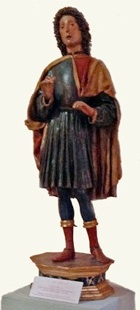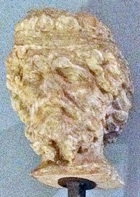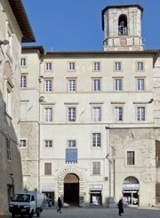
This museum, which contains mostly works of art from the Duomo, is arranged in 26 rooms on two floors of the Palazzo dei Canonici.
-
✴The entrance (illustrated here) is in the first cloister, diagonally opposite the apse of the Duomo.
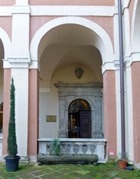
-
✴The ticket office (to the left as you enter) is in a room that used to be the canons' refectory.
-
✴Rooms 2-6 opposite the ticket office contain an exhibition of items from the treasury of the Duomo and of illuminated manuscripts.
-
✴Room 4, the Sala Rossa (red room), was used for meetings between the canons and the bishop.
Museum
Room 7

Room 11
Altare di San Bernardino (1473)

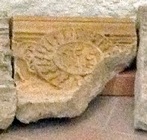
The Commune commissioned this altar from Agostino di Duccio for a chapel in the Duomo (the original Cappella di San Bernardino). The altar and the dedication to St Bernardino were moved to the opposite side of the nave (the present Cappella di San Bernardino) in 1486, when the original chapel was re-dedicated to the Santo Anello. The altar was destroyed in 1559. Fragments from the arch that surrounded it are exhibited here. They include a relief of the sacred name of Jesus (“IHS”), which was the emblem of St Bernardino.
Altare della Pietà (1473-4)
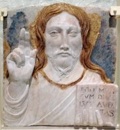
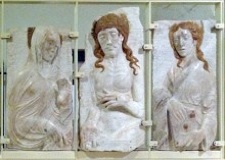
This altar, which was on the left wall of the Duomo (between the entrance to the external pulpit and the side door), was built according to the provisions of the will of Nicolò Ranieri. He named the Ospedale di Santa Maria della Misercordia as his heir on the condition that they would erect a chapel in the Duomo. The Cathedral Chapter conceded the necessary space and the Prior of the hospice duly commissioned the work from Agostino di Duccio in 1473. The documentation specified reliefs of Christ “in pietà”, between the Virgin and St John the Baptist, with God the Father above. The altar was complete by 1474, when two local sculptors pronounced it to be well-executed and worthy of its cost.
In 1625, by which time the funds to maintain the use of the altar had been exhausted, Bishop Cosimo de Torres ordered its demolition. Some fragments were recorded at the time of the apostolic visit of 1660: they were still embedded in the wall, although the surrounding structure had been demolished. Costantino Ranieri undertook their restoration in 1703, so that the altar could once more be used for services. However, it had fallen into disuse again by 1792, when it was definitively demolished.
A number of surviving fragments (including those illustrated above) were returned to the left wall of the Duomo in 1832. They were removed for restoration i [the 1990s?] The surviving fragments, which include some that were discovered only recently, were restored and placed on display in the museum in 2013.
Altare di San Sebastiano (1576)

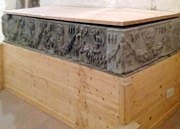
The Cantagallina family commissioned this marble altar for the counter façade of the Duomo. It was dismantled and largely destroyed in 1651, although fragments of it survive here. They include:
-
✴elements of a long inscription that includes the family name; and
a marble frieze.
(The original altarpiece (1576) of the Martyrdom of St Sebastian by Orazio Alfani is now on the right wall of the Duomo).
Corridor (Rooms 12 and 13)
The corridor contains a collection of 13th century sculptural fragments, many of which came from the old Duomo and were previously displayed in the cloister outside the museum.
Relief (12th century)
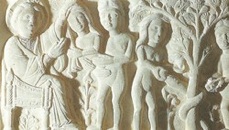
This relief, which was part of a frieze on that depicted scenes from Genesis, came from the an altar on a pilaster in the old Duomo that subsequently became known as the Altare della Madonna del Verde (see below). The surviving scenes depict:
-
✴God blessing Eve as she emerges from Adam's side; and
-
✴Adam and Eve standing below the tree of the forbidden fruit.
Creation of Eve (late 13th or early 14th century)
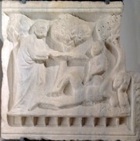
Sculpted fragments (late 13th century)
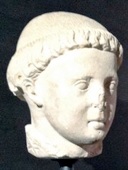
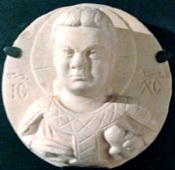
These two fragments by a follower of Arnolfo di Cambio, which might have belonged to the monument to Pope Urban IV in the old Duomo, depict:
-
✴the head of a deacon; and
-
✴a tondo of Christ the Redeemer.
Head of a young man (early 14th century)
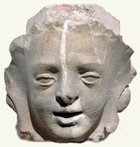
Room 15
Madonna della Costa (12th century)

Triptych (ca. 1315)

This triptych, which is attributed to Meo di Guido da Siena, survives in its original frame. It was probably commissioned for San Domenico Vecchio using donations received following the grant of the indulgence by Pope Benedict XI.
Madonna del Latte (14th century)
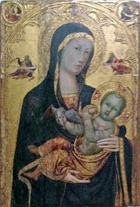
Triptych (14th century)
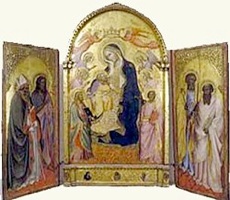
This triptych, which is attributed to the Florentine Agnolo Gaddi or his workshop, is of unknown provenance. It was first documented in the 19th century in the canons' sacristy in the Palazzo dei Canonici. The rectangular side panels do not relate dimensionally to the central panel and probably came originally from a different work by the same artist.
-
✴The central panel depicts the Madonna del Latte crowned by angels with SS James and Andrew.
-
✴The side panels depict: SS Herculanus and John the Evangelist (on the left); and SS Peter and Paul (on the right).
-
✴The tondi in the predella depict the Pietà, the Virgin and St John the Evangelist.
Death of the Virgin (1432)
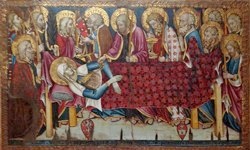
The inscription on this panel from the Duomo records that Pietro di Giovanni and his parishioners commissioned it in 1432 in honour of God and the Virgin. Two coats of arms flank the inscription: one is the griffin of Perugia and the other probably belonged to the commissioner. The altarpiece, which is in an anachronistic style, depicts the Virgin on her death bed.
Stairway
The following panels are respectively at the bottom and at the top of the stairs that lead to the upper floor of the museum:
Madonna del Verde (early 14th century)

The fresco, which has been heavily repainted, was transferred to canvas in 1466. The heirs of the merchant Nicolò Bucci commissioned the new Altare della Madonna del Verde to house it in the right aisle of the present church. They simultaneously commissioned a Pietà and panels of eight angels from Bartolomeo Caporali, and it has been assumed that these were to be incorporated into the altar. Unfortunately, they have been lost.
-
✴The altar was dismantled in 1849 and later re-erected in the baptistery.
-
✴The altarpiece was moved to Sant' Angelo at that point, and moved again to the museum in 1979. It was replaced in Sant’ Angelo by a copy.
Pietà (1486)
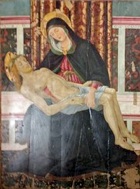
Room 17
Processional Icon (1453)
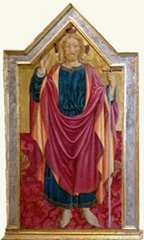
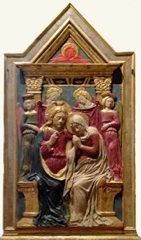
This wooden double-sided icon by Battista di Baldassare Mattioli was commissioned to replace an earlier one that was used in the annual procession from the Duomo to Santa Maria di Monteluce on the Feast of the Assumption of the Virgin. The procession was revived in 1999, using a reproduction of this original.
The icon depicts:
-
✴Christ the Redeemer on one side; and
-
✴the Coronation of the Virgin on the other.
Christ, the Virgin and Saints (1489)
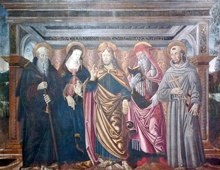
This panel, which is signed by Ludovico di Angelo and dated, is his only known signed work. It was first recorded in the late 18th century in the sacristy of the Oratorio di SS Simone e Fiorenzo, although there is nothing in its iconography to suggest that it was commissioned for this oratory. It moved to the Duomo in 1863 and subsequently to the museum.
The altarpiece depicts five standing figures in front of a rectangular tabernacle set in a landscape:
-
✴Christ blessing, at the centre;
-
✴the Virgin and St Antony Abbot to the left; and
-
✴SS Jerome and Francis to the right.
Room 18
Gonfalone di San Fiorenzo (1476)
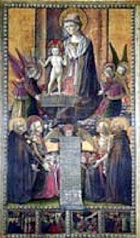
The banner depicts the Madonna with an extraordinary image of the naked baby Jesus standing in a basket of red roses with his arms outstretched, already carrying the marks of the Crucifixion. An angel below carries a scroll with a long poem that exhorts the citizens of Perugia to mend their evil ways. SS Sebastian and Florentius intercede for the city alongside two of the seven founders of the Servite order, both of whom were later canonised:
-
✴St Philip Benizi, who was Prior General of the Servites from 1267 until his death in 1285 and was the first Servite to be canonised (in 1671); and
-
✴St Peregrine Laziosi. As a young man, he slapped Philip Benizi during an affray in ca. 1290, and was converted when his victim turned the other cheek. He became a Servite and later cured himself of cancer of the foot by prayer. He died (from other causes) in 1345 and was canonised in 1726.
The predella shows scenes from the life of St Philip Benizi and and two posthumous miracles performed by St Peregrine Laziosi.
Panels (1514)
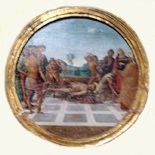
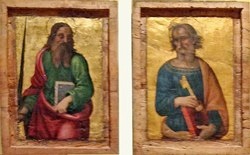
Four [documented?] panels by Giannicola di Paolo survived when the organ screen of the Duomo was demolished in 1784. They comprise:
-
✴a lunette depicting the Risen Christ with SS Laurence and Herculanus, which is now above the altarpiece of the Cappella del Gonfalone there; and
-
✴these three panels that are now in the museum:
-
•a tondo of the martyrdom of St Lawrence, dated by inscription; and
-
•panels of SS Peter and Paul.
Room 19
Sant' Onofrio Altarpiece (1484)
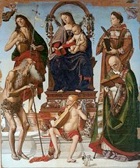
The altarpiece depicts the Madonna and Child with SS Humphrey ( dressed as an unkempt hermit), John the Baptist and Laurence and an unidentified bishop. This last figure is probably St Herculanus, who is perhaps portrayed using a portrait of Jacopo Vagnucci. (This figure does not have a halo. but a drawing in the British Museum on which it seems to have been based does).
During a recent restoration, traces of what seems to have been an imposing wooden frame were uncovered. The form of this frame is unknown, but it could have also included a predella. A small panel in the Louvre, Paris, which is attributed to Signorelli and depicts the birth and naming of St John the Baptist might have belonged to it. It is also possible that the inscription mentioned above was at its centre.
When this chapel was destroyed 1608, the altarpiece was moved a series of other locations in the Duomo: it was, for example, documented near the sacristy in 1674. It became the major exhibit in the newly instituted Museo Capitolare in 1923.
St Julian (ca. 1480)
Tabernacle (ca. 1491)
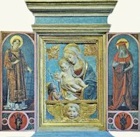
The inner surfaces of the doors are painted in tempera, work attributed to Nicolò di Giovanni di Benedetto del Priore. The scenes depicted are:
-
✴St Laurence, above the arms of Bishop Dioniso Vannucci (on the left); and
-
✴St Jerome, above the arms of Bishop Girolamo Balbano (on the right).
The proposed dating arises from the fact that Bishop Balbano succeeded Bishop Vannucci in 1491.
St Nicholas Altarpiece (1529)
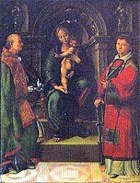
The altarpiece depicts the Madonna and Child enthroned with:
-
✴St Nicholas of Bari, who carries the three bags of gold which he used to save the daughters of a poor man from prostitution; and
-
✴St Laurence, who holds the grill on which he was martyred.
St Laurence (1562)
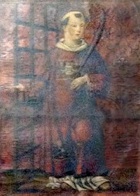
Room 20
Altare di San Bernardino (1559-67)
Ottavio Lancellotti recorded in his “Scorta Sagra” (17th century) that this altar in the Cappella di San Bernardino of the Duomo, which belonged to the Collegio della Mercanzia, was finished in 1567. He also wrote that:
-
✴the stucco work was by Ludovico Scalza ; and
-
✴the sculpture was by Vincenzo Danti.
The altar was destroyed in 1797, and is now known only from a drawing (1793) that still belongs to the Collegio della Mercanzia.
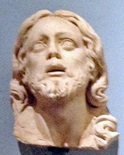
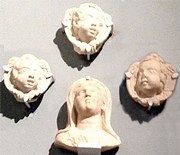
Fragments in this room that are attributed to Vincenzo Danti might have come from the decoration of this altar:
-
✴a mutilated head of the Risen Christ; and
-
✴a small head of the Virgin and three cherubs.
Head of a Man (16th century)
Madonna and Child with saints (ca. 1573)
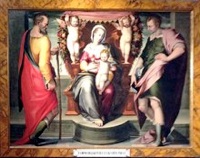
This panel, which is attributed to Girolamo Danti, depicts the Madonna and Child with SS Joseph and Claudius. An inscription on the frame records that it is a gift from the Collegio di Pietra e Legname (guild of stone masons and carpenters), who had commissioned it for their church of San Claudio. The gift was presumably made in 1798, when the guild was suppressed and the church was demolished.
St Mary Magdalen (ca. 1662)
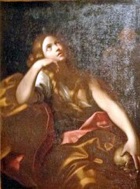
Madonna and Child (ca. 1600)
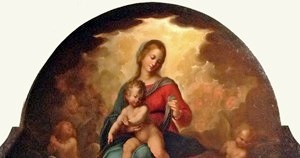
This lunette-shaped panel, which depicts depicts the seated Madonna and Child with two putti, was documented in the sacristy of the Oratorio di San Francesco, with an attribution to Giovanni Antonio Scaramuccia, in 1784. It is thought to be Scaramuccia’s earliest surviving work.
Madonna and Child (17th century)
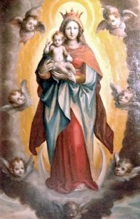
Room 22
Martyrdom of St Herculanus (18th century)
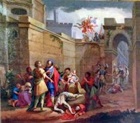
Room 23
Deposition (1729)
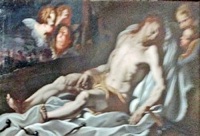
This altarpiece, which presumably came from the Duomo, is signed by Giacinto Boccanera and dated by inscription.
St John the Baptist (ca. 1730)
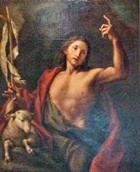
Room 24
Scenes from the Life of St Laurence (18th century)
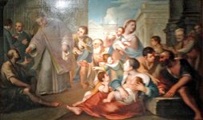

These two panels, which presumably came from the Duomo and are attributed to Baldassarre Orsini, depict:
-
✴St Laurence distributing arms; and
-
✴the martyrdom of St Laurence.
Marriage of the Virgin (1814)

Excavated Area
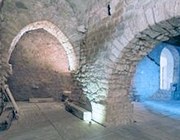
It is possible to add to your visit a guided tour of the extensive archeological site under the Duomo and Palazzo dei Canonici, which was opened to the public in 2011. This covers a route of about a kilometer.
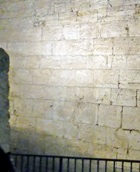
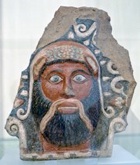
The frescoed walls of a Roman house (1st century BC) were found nearby. This building was destroyed by fire, perhaps during the Perusine War.
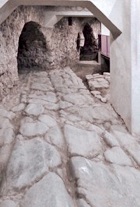
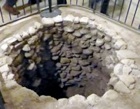
The monumental terrace probably supported defensive structures from an early date. The base of what seems to have been a polygonal tower (6th or 7th century) belonging to this structure has been unearthed against the wall of Via delle Cantine,. From the 10th century, the defensive complex here incorporated the old Duomo (San Lorenzo) and its campanile and was referred to as the Castello di San Lorenzo. This complex housed the ecclesiastical authorities of the city and, from at least the 11th century, the canons of San Lorenzo.


